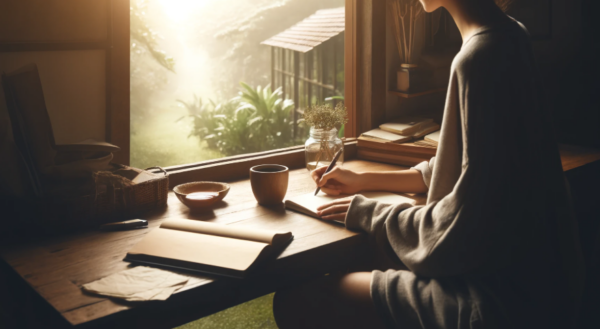In the literary and publishing world, the question of whether 50 pages constitutes an adequate length for a book invites a spectrum of opinions. The importance of page count transcends mere numbers; it is deeply connected to reader expectations, publishing standards, and even the perceived value of a book. For authors and publishers alike, determining the right length, whether it’s a 50-page book or a novel with a minimum of 60 pages, can significantly influence its reception and success. How many pages does a book have to be to meet these expectations? The minimum pages for a book can vary widely across genres and publishing formats, as explored in this guide to publishing short books, challenging traditional notions of what constitutes a complete work. For instance, while the average book might have around 300 pages, genres like novellas and children’s or juvenile aimed books can thrive with far fewer and are still a big share when it comes to overall sales.
This article delves into the nuances of page count requirements, exploring how genre, audience expectations, and book formats shape what is considered an acceptable book-length. By examining these factors, including how the minimum pages for a novel compare to shorter works, we aim to provide clarity on the question of page adequacy, offering insights for both aspiring writers and seasoned authors navigating the evolving publishing industry.
Your Publishing Journey Awaits – Start NowUnderstanding Minimum Pages for Books: Categories & Page Count Norms
The literary world is richly diverse, with each category of writing bringing its own conventions, including standard page counts that serve as general guidelines for authors. Novels, for instance, typically span from 200 to 400 pages, though epic tales can extend much further, immersing readers in complex narratives that demand more extensive exploration. On the other hand, novellas, which fall between short stories and full-length novels, usually range from 60 to 120 pages, offering a concise yet comprehensive storytelling experience.
Short stories, celebrated for their brevity and impact, often do not exceed 30 pages. This format challenges writers to craft compelling narratives within a limited scope, highlighting the importance of planning your book effectively to evoke emotion and build immersive worlds in just a few thousand words. Children’s books, on the other hand, vary widely in length depending on the age group they target. Picture books for the youngest readers might span just 32 pages with minimal text, while middle-grade novels often average around 200 pages, accommodating more intricate stories suitable for older children.
Other formats include flash fiction, a genre that epitomizes the art of succinct storytelling, often confined to a single page or less. With just a few hundred words, flash fiction challenges writers to craft powerful narratives and evoke meaning with precision and economy. Its growing popularity showcases how impactful well-chosen words and imagination can be, even within the briefest of formats.
Tips for Writing in Shorter Formats:
- Focus on a Single Plotline: Avoid multiple subplots that can complicate the narrative. Stick to one main storyline to maintain clarity and coherence.
- Develop Strong Characters Quickly: Introduce characters with clear motivations and personalities early on to engage readers without extensive backstory.
- Maintain Pacing: Keep the story moving forward at a steady pace, ensuring that each scene contributes to the overall narrative.
- Create Impactful Endings: Aim for resolutions that leave a lasting impression, whether it’s a twist, a poignant moment, or a satisfying conclusion.
The Role of Genre and Audience
The genre of a book plays a pivotal role in determining its page count, as each genre comes with its own set of expectations regarding chapter length. Fiction genres such as fantasy and science fiction often feature expansive world-building and intricate plot developments, necessitating longer narratives that can extend well beyond 300 pages. In contrast, romance or contemporary fiction might require fewer pages to tell a story that is more focused on character development and interpersonal dynamics.
Genres That Work Well with 50 Pages or Fewer:
- Children’s Picture Books – Typically 24–48 pages with illustrations.
- Short Story Collections – A single impactful short story or a collection of flash fiction.
- Poetry Books – Often concise and thematic, fitting within 50 pages.
- Self-Help & Motivational Booklets – Quick, digestible insights and advice.
- Workbooks & Guided Journals – Interactive exercises with minimal text.
- Zines & Experimental Fiction – Creative, niche works designed for a shorter format.
Non-fiction books, depending on their subject matter and focus, can also vary significantly in length. A detailed historical account or comprehensive scientific treatise might run into hundreds of pages to cover the breadth and depth of information adequately. Meanwhile, self-help or motivational books might opt for a more concise approach, aiming for brevity to maintain the reader’s engagement and deliver actionable insights efficiently.
Audience Expectations
Audience expectations further influence the length of a book. Children’s books, particularly those for very young readers, are often shorter and rely heavily on illustrations to complement the text. As the target age group rises, so does the expected word count, with young adult novels often mirroring adult fiction in terms of length. Adult readers, depending on the genre, might expect a substantial volume that promises hours of immersion or prefer a shorter, more focused read that fits into a busy lifestyle. Understanding the genre and audience helps authors and publishers tailor the book’s length to meet expectations, ensuring a satisfying reading experience.
Publishing Formats: Print vs. eBooks
The advent of eBooks has introduced a new dimension of flexibility to book publishing, particularly when it comes to page count. Traditional book print is often bound by physical constraints and cost considerations. The trim size, copyright page, which refers to the printed book’s physical dimensions, and the page size must be carefully selected not only to enhance readability but also to manage production costs. Additionally, print books include elements like copyright pages, acknowledgments, and sometimes even a few blank pages at the end, all of which contribute to the total amount of pages
eBooks, on the other hand, are liberated from many of these physical constraints. Without the need for physical materials, the cost of adding another page to an eBook is negligible. This flexibility allows for a broader range of page counts, accommodating everything from short stories to extensive, detailed works without the economic pressures tied to the print process.
Moreover, the concept of ‘pages’ in eBooks is somewhat fluid, as the text can reflow to fit the screen size and font preferences of the reader, making the traditional amount of pages a less critical measure of length. This digital format opens up opportunities for authors to publish works that might have been considered too short or too long for traditional print, catering to a wider array of reader preferences and encouraging a diversity of literary expressions.

Word Count vs. Page Count
Understanding the distinction between word count and page count is crucial in the literary and publishing realms. Word count refers to the total number of words contained within a manuscript, serving as a more precise measure of a book’s length. Page count, conversely, is influenced by book formatting factors such as font size, line spacing, and page dimensions, making it a less exact metric.
General guidelines
General guidelines suggest that an average novel contains approximately 80,000 to 100,000 words, which typically translates to about 300 to 400 pages in a standard 6″ x 9″ book format with normal margins and spacing. However, these conversions can vary widely. For instance, a 50,000-word manuscript might span 200 pages in a print book but could adjust to more or fewer pages in an eBook format, depending on the reader’s settings.
Comparing Genres
Genres can also affect these conversions. A young adult novel might be around 60,000 words, often resulting in a 200 to 250-page book, considering the genre’s trend towards slightly larger fonts and spacing. On the other hand, a dense academic work with the same word count could have a higher number of pages due to the inclusion of charts, graphs, and footnotes, demonstrating the difference in how content type influences the relationship between how many words and how many pages are.
Self-Publishing and Its Impact on Page Count
Self-publishing has revolutionized the literary landscape, offering authors unprecedented control over their work, including the freedom to decide the length of their books. This shift has made it possible for works of varying lengths, including shorter formats like 30k-word books, to find their audience. By dismantling traditional barriers, self-publishing empowers writers to share stories that might not fit conventional publishing molds—whether too short or too long—while still resonating with readers.
Most self-publishing platforms do stipulate a minimum page count for books, typically around 24 to 48 pages, to ensure they can be physically bound and categorized as such. This requirement is particularly relevant for print-on-demand services, where physical production necessitates structural thresholds. Beyond this minimum, however, self-published authors enjoy significant latitude in determining the length of their work. This flexibility allows writers to craft narratives tailored to the content’s needs rather than external constraints, often resulting in more authentic and engaging stories.
Furthermore, the rise of eBooks and self-publishing online has further reduced concerns about page count, shifting the focus to word count and content quality. This digital format enables a diversity of genres and forms, from novellas and short story collections to expansive epic series, enriching the literary world with a wide array of voices and ideas.
Conclusion: Crafting the Story, Quality Over Quantity
In exploring the multifaceted considerations surrounding page count in the publishing industry, we’ve delved into how factors like book categories, audience expectations, genre, and the advent of self-publishing and eBooks influence what constitutes an ‘adequate’ length for a book.
Page and word count norms vary widely across genres, from the brevity of flash fiction to the depth of novels. Self-publishing has expanded these boundaries, giving authors the freedom to shape their book’s length based on the story rather than rigid industry rules. Whether 50 pages is enough depends on genre, audience, and format, but the real focus should be on quality storytelling. Authors should let their narratives unfold naturally, ensuring every page serves a purpose and resonates with readers.
If you’re feeling ready to introduce your book to readers far and wide, consider Spines as your gateway to the publishing future. At Spines, we leverage advanced AI technology to revolutionize the way you publish. Our comprehensive suite of services, from detailed book editing services and proofreading to eye-catching book cover design, along with effortless distribution and targeted marketing strategies on diverse channels and platforms, guarantees that your book stands out from the rest. Sign up for free to publish your first book with Spines.
FAQs – Is 50 Pages Enough for a Book?
Q: How many pages does a book have to be?
The minimum page count for a book depends on its type. For print books, a minimum of 24–30 pages is typically required to have a spine, while eBooks can be much shorter.
Q: How many pages is a good size for a book? Does it depend on the genre?
The “good” size for a book varies:
Novels: 200–400 pages
Non-fiction: 150–300 pages
Children’s books: 24–100 pages
Ultimately, it depends on the target audience and the book’s purpose.
Q: Is 50 pages enough for a book?
Yes, a 50-page book can qualify as a book, especially for specific genres like children’s books, booklets, or short self-help guides. However, for a traditional novel, 50 pages is generally considered too short.
Q: Can a 100-page book be published?
Yes, a 100-page book can be published. Learn more about publishing short books and the opportunities they offer for various genres
Q: Is 250 pages too short for a book?
Not at all! Many novels fall in the range of 200–300 pages. A 250-page book is often considered ideal for general fiction, depending on the target audience and genre.
How many pages is a 50,000-word book?
A 50,000-word book is typically around 200 pages, depending on formatting, font size, and spacing. Explore the process of publishing shorter works here.
What is the shortest book you can publish on Amazon?
Amazon KDP does not impose a strict minimum length for books, like many other self-publishing services.








